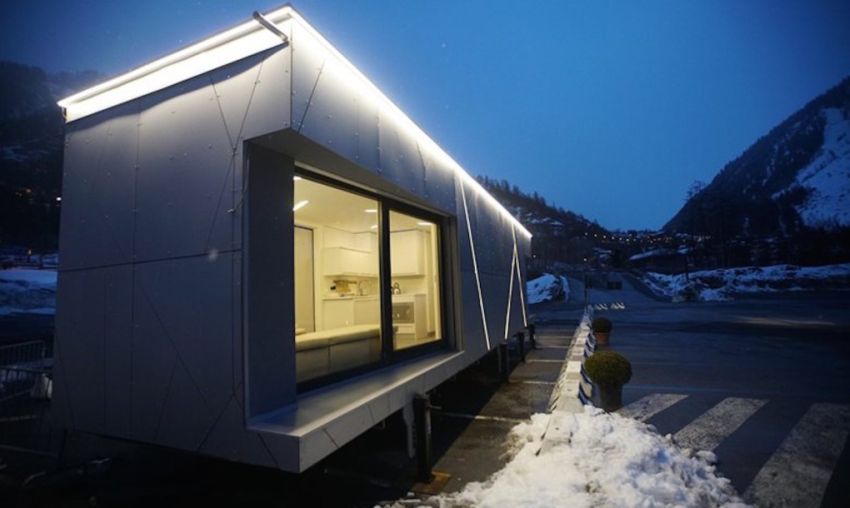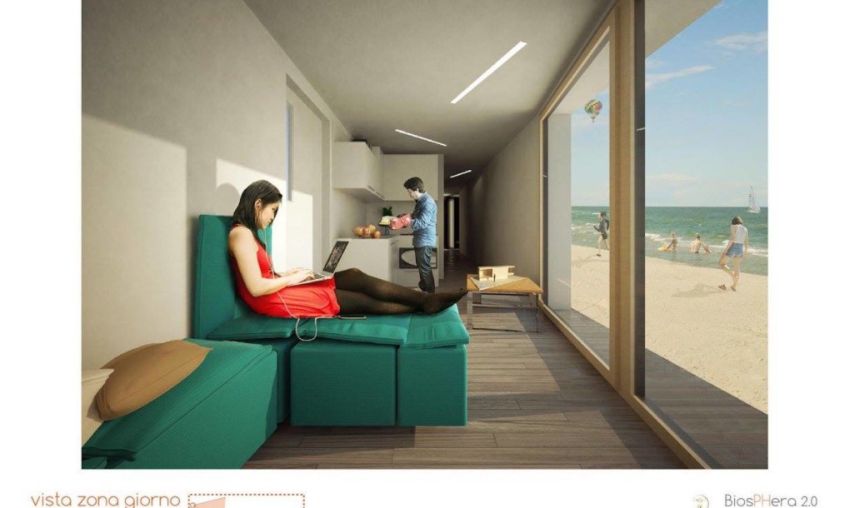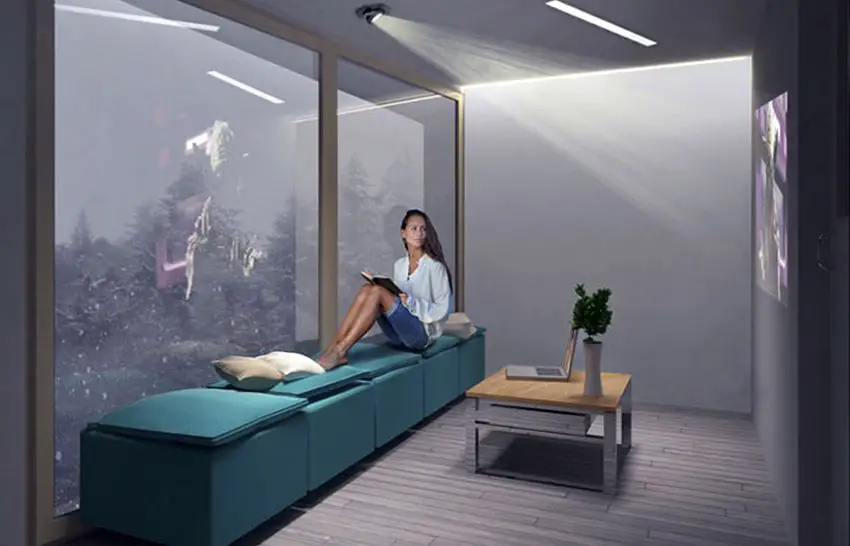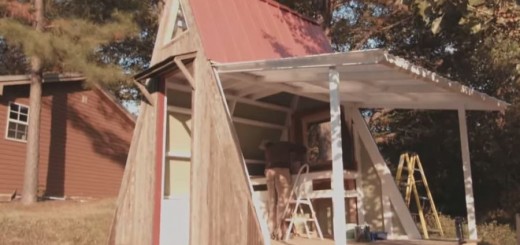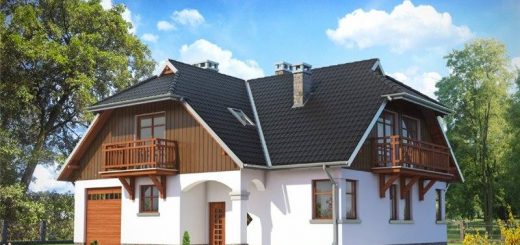Biosfera, The Passive House That Ffits Anywhere
With a close eye on the natural environment, architects and scientists are now joining efforts to create home that have the least possible impact on nature, incorporating the latest developments in the fields of technology and innovative architecture. In the case below, a company specialized in production of passive houses joined forces with several Italian universities and research institutes to give birth to what is suggestively called Biosfera 2.0, a mobile passive house.
We need to underlines from the very beginning the house produces as much energy as it consumes. The underlying principle is the passive design and the solar panels mounted on the roof. To refresh your knowledge, here are the main features of passive design: a compact architecture with the smallest possible footprint, wide windows facing south and no windows facing north, fewest doors possible, half of the roof oriented towards south to allow installment of solar panels and one single building body.
The house was specially designed to be accessible to people living in various environments, less favorable to classical homes. Biosphera 2.0 is being put to the test with a yearlong tour around Italy, where the prototype will pop up in six different locations and be inhabited by over 20 people as part of a research project. According to Inhabitat.com, the 25-square-meter Biosphera 2.0 has already hit the road, starting with installation in the Italian town Courmayeur at the foot of Mount Blanc. From there the mobile home will pop up for two months at a time in Aosta, Milan, Rimini, Torino, and finally Lugano where it will end its trip. In the meantime, researchers will collect, monitor, and analyze the Biosphera 2.0’s energy performance data and feedback from the 24 inhabitants over the course of twelve months.
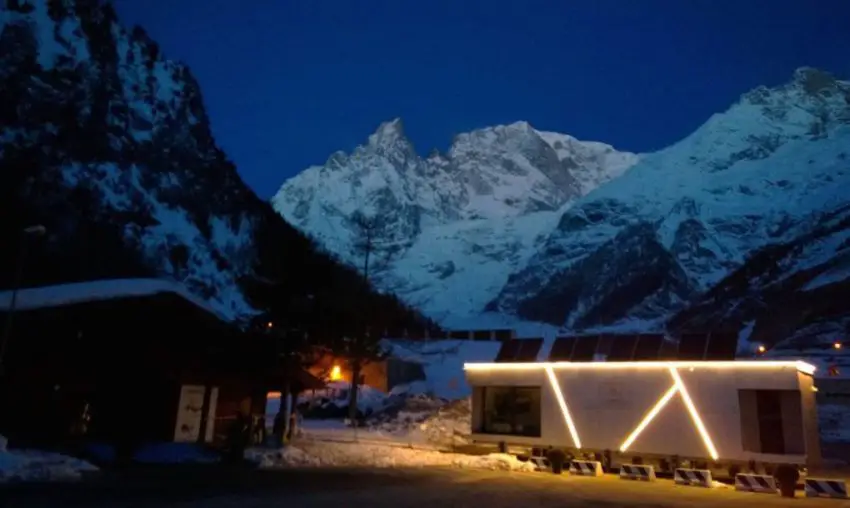
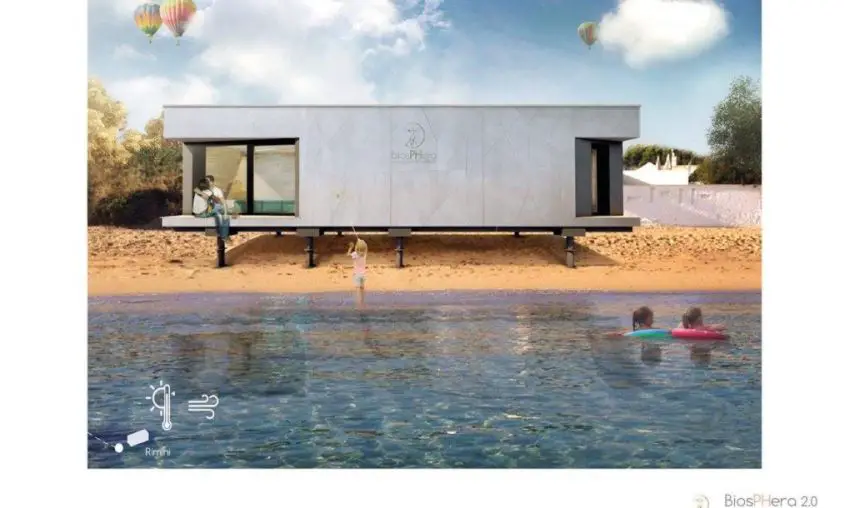
The tiny house offers all the standard comforts of home including a bedroom, bathroom, living area, kitchen, and outdoor deck. The home is also equipped with LEDs and constructed from PEFC-certified timber. Thanks to its passive house design and effective insulation, the Biosphera 2.0 can adapt to a variety of environmental conditions, such as urban pollution, and temperatures from -21 degrees Celsius in winter to 39 degrees Celsius in summer. The interior air temperatures fluctuate between a comfortable 21 to 25 degrees Celsius year-round without need for an external heating or cooling network.
